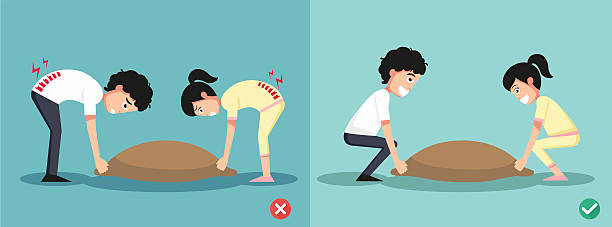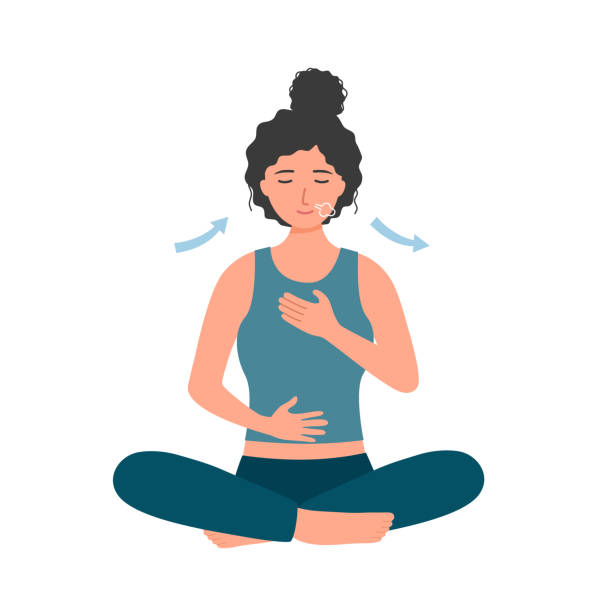Are you looking for exercises for lower back pain prevention? Many people, no matter their age, often feel lower back pain, especially those who work very little or a lot. Even though drugs and therapy can ease pain for some time, you can help prevent lower back pain by making stretching a part of your regular schedule. Performing stretching exercises helps reduce muscle tension, increase flexibility, improve the way you stand, and make your back muscles stronger. To keep your lower back healthy in the long term, you should know how and why these stretches work.
Why It Is Important to Stretch Your Lower Back

The lower back carries a large load for our body and is strained most of the time by sitting, standing, lifting, or bending. With time, posture problems, uneven muscle strength, and tightness in the hips and hamstrings may increase your risk of lower back pain. Such exercises can neutralize these results by relaxing your muscles, boosting blood flow,w and restoring balance. They also work to keep the spine and nearby parts healthy, lowering the risk of getting hurt or inflamed.
Every day stretching helps the spine stay flexible, important for healthy movement. Moving flexibly in the lower back, hamstrings, and hips relieves the pressure on the lower back. By doing this, the lower back pain usually caused by damaged intervertebral discs and joints becomes less frequent.
Using a regular stretching plan is key for reducing low back pain.
Making sure to stretch your lower back daily with a routine exercise is very important. It’s important to include exercises for the hip flexors, glutes, hamstrings, and abdominal muscles in your routine, as well as for the lower back itself. A complete approach helps maintain alignment so muscular stress does not cause problems in the lower back.
Adding these stretches to your day, in either the morning or evening, is advantageous. The right stretches in the morning help tune your body for upcoming activities, and at the end of the day, they can help relax and loosen your muscles. Sticking to a routine allows your muscles to improve their flexibility and reduces at risk of sudden accidents.
Keeping Your Core Strengthened and Flexible May Help You Avoid Back Pain

Having core strength improves the health of your back and prevents back pain. Having good core strength helps support the lower back and decreases the risk of injury while you are moving. Working the muscles in the abdomen, obliques, and pelvic floor through stretches improves balance and prevents pressure on the spine.
Stretching the hamstrings and hip flexors, especially target areas that have no good reason not to stretch. If your hamstrings are tight, this may put your pelvis out of balance and add stress to the lower back. Stretching these areas corrects your body’s alignment and helps to share the pressure among bones and muscles more evenly.
Main Muscles Important for Lower Back Flexibility
When you use stretching for lower back pain, focus on stretching several muscles working together. It is the erector spinae, attached down the back, that both bends and balances the spine. Flexible muscles help avoid problems such as stiffness and strain when you are active.
Hip flexors are included as one of the key muscle groups, too. If you stay in one position for a long time, these muscles contract and can lead to problems with your pelvis and back. Performing hip stretches helps restore hip flexor length and supports good spine position. Also, the gluteus medius and maximus contribute to maintaining your pelvis in the right place. Care for your glutes since weak or tight buttocks can cause the back muscles to work too much and make back pain more likely.
Don’t forget to work on stretching the hamstrings and abdominal muscles as well. Correct alignment of the back is supported by good tension between the muscles.
Adding Breathing and Mindfulness to Your Stretching Every Day

Don’t treat stretching as something you do quickly, but make it a relaxed approach to uniting your body and breathing. Using your diaphragm to breathe deeply brings more oxygen to your muscles, which makes stretching them more relaxing. Stretching mindfully guides you to consider your body’s needs and prevents you from straining, which is dangerous for you.
Doing some simple stretches with deep breathing eases tension and stress in your muscles because it boosts the activity of your parasympathetic nervous system. Since psychological stress can bring on muscle tightness and pain in the back, the benefits of this method are physical and mental.
Matching Your Stretching Ice Your Everyday Routine
Because each body is individual, solutions that benefit one may fail for others. As you plan your routine to help with lower back pain, take into account what you normally do each day and if you have any health-related problems. In the case of people who sit most of the day, hip and hamstring stretches may be their best bet, but athletes can improve their game with spinal flexibility and exercises for their glutes.
When you’re healing from back pain or have chronic issues, talk to your health professional or physical therapist first before following a new routine. They will help you identify safe stretches and stop you from worsening any ongoing problems.
Why Stretching Every Day is Good for Your Lower Back
Legend has it that stretching every day improves your overall health and not just your back. It makes your posture better, reduces muscle tiredness, and supports mobility and balance. The sooner you start proactively caring for your back, the more your risk of future back issues is, and you enjoy a better overall quality of life.
Also, making stretching a habit can make you notice your body’s movements and help you move better. It can also help prevent sudden injuries and catch the beginning stages of any strain so they don’t get worse.
Conclusion
Stretches work well as a non-surgical option to keep your lower back healthy and reduce your risk of back pain. Centering on being flexible, building strength, correcting posture, and ensuring balance, a daily course can greatly reduce your discomfort and increase your mobility. If you keep going, learn the right technique,e and pay attention to your body, you’ll make progress.
You don’t need to spend a lot of time stretching—a short daily session can still help a lot. For every step you take, you’ll learn to manage stress and boost your back strength. Help your spine by stretching every day, and you will enjoy positive results for a long period.

